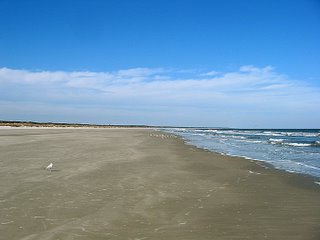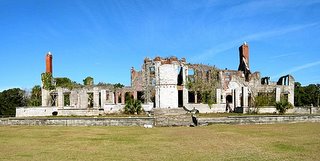 |
| Ocean Near Chesapeake Bay (View From Virginia) |
European Union laws require you to give European Union visitors information about cookies used on your blog. Note: I'm not savvy enough to know about blog cookies; if there's a concern on your part, it's probably best not to visit my pages.
Showing posts with label Admiral Cockburn. Show all posts
Showing posts with label Admiral Cockburn. Show all posts
Tuesday, March 16, 2021
Chesapeake Bay
Monday, May 25, 2020
Tuesday, June 25, 2019
Gilmer Letter Regarding The British In Hampton
 |
| Source - Library Of Virginia Online |
Excerpts from the Educator Resource for Francis Walker Gilmer Letter (same link as above):
"Letter, Francis Walker Gilmer, Montevideo, Buckingham County, to William Wirt, Richmond, 8 July 1813. Personal Papers Collection, Accession 18763. Library of Virginia."
"Gilmer’s outrage at the conduct of the British forces at Hampton under British Admiral Sir Alexander Cockburn is one of the most controversial episodes of the war. After defeating elements of Virginia militia, British forces entered the city on June 25, 1813. During the withdrawal the next day, troops destroyed and looted property, murdered citizens, and raped several women. Cockburn and other officers blamed Canadian Chasseurs (French deserters recruited by the English) for the mayhem. Whatever the truth, the incident provoked deep outrage throughout America. “Remember Hampton” became a rallying cry for American troops, including those under Jackson at New Orleans."
Labels:
Admiral Cochrane,
Admiral Cockburn,
British Army,
British Military,
British Navy,
Canada,
Famous Events,
Letters,
Libraries,
Militia,
Virginia,
Wikipedia
Thursday, May 7, 2015
Admiral Cockburn On The Sassafras
| Source |
"It was on the 6th of May, a warm and beautiful morning, that Cockburn, with hundred men, in eighteen barges, went up the Sassafras."
| Source |
"So delighted was Cockburn with success in plundering and destroying unprotected towns that with characteristic swagger he declared he should not be satisfied until he had burned every building Baltimore."
Labels:
Admiral Cockburn,
British Navy,
Maps,
Maryland,
Rivers
Wednesday, April 29, 2015
Pillage Of Maryland
"[Admiral] Cockburn had no idea of legitimate hostilities, but of pillage."
"...spring of 1813 the High-Flyer British tender was captured...in which prize were found Cockburn's own minutes [see below]...conduct at Frenchtown [Maryland] was thus registered in his log book entry dated April 29, 1813 [first entry below]:
| Source |
Labels:
Admiral Cockburn,
Boats,
British Navy,
Diaries,
Maryland
Wednesday, April 15, 2015
The H.M.S. Maidstone Detachment
| Source |
From Royal Navy biographies:
"...this service was performed in the interior of the enemy's country...in a difficult and unknown navigation...."
| Source |
An excerpt of the letter referenced above:
"...understanding Georgetown and Frederickstown, situated up the Sasafras river, were places of some trade and importance...".
Friday, January 10, 2014
Landing On Cumberland Island
As seen at the Cumberland NPS Museum exhibit:
A battery on Point Peter was established in 1796 to protect the mouth of the St. Mary's River and the adjacent islands from unwelcome ships. Cumberland Island was an attractive landing spot, offering easy access from the ocean, and the nearby town of St. Mary's had amenities such as fresh food and supplies. After a period of vacancy, a blockhouse was built and the battery was garrisoned for protection during the War of 1812.
It was not until [January 10] 1815 that Point Peter was tested. Official military correspondence tells the story of Rear Admiral George Cockburn and the British fleet landing on Cumberland Island soon after their attacks on Washington and Baltimore.
Thursday, June 20, 2013
General Thomas Sydney Beckwith
Lieutenant-General Sir Thomas Sydney Beckwith (1772 - January 15, 1831); married Mary, eldest daughter of Sir William Douglas, sister to Charles, Marquis of Queensbury; Governor of Bombay.
From the Dictionary of Canadian Biography Online:
In January 1813...Beckwith was named an assistant quartermaster general in North America.
| Source at Hampton, Virginia |
At the same time he was given command of the landing forces in an amphibious operation intended to harry the Chesapeake Bay area and reduce American pressure on the Canadas. The expedition was troubled by a command that was shared among Beckwith and admirals Warren and George Cockburn. Captain Charles James Napier, Beckwith’s second in command, blamed this “republic of commanders” for a failed attack on Craney Island, Va. Napier felt that Beckwith had “wanted neither head, nor heart, nor hand for his business; but he was not free to do what he thought wise, and run sulky when required to do what he deemed silly. . . . He is certainly a very clever fellow, but a very odd fish.” The expedition went to Halifax in September 1813.
Friday, May 4, 2012
The Lay Of The Scottish Fiddle
The Lay Of The Scottish Fiddle, A Tale Of Havre de Grace, is a parody of Sir Walter Scott's works. It was described in the Cyclopedia of American Literature:
The hero is Admiral Cockburn, and the principal incident the burning and sacking of the little town of Havre de Grace on the coast of Maryland.
From The Lay Of The Scottish Fiddle:
Saturday, March 17, 2012
The Heroism Of Kitty Knight
Kitty Knight was mentioned in the publication Kent's Part In the War, 1812-1814.
"The previous year (1813) the British had burned Havre-de-Grace and Frenchtown at the head of Chesapeake Bay." "They then went into Sassafras River and burned both Georgetown and Fredericktown - incidentally bringing to light the heroism of Kitty Knight."
Is the Kitty Knight House haunted?
"The previous year (1813) the British had burned Havre-de-Grace and Frenchtown at the head of Chesapeake Bay." "They then went into Sassafras River and burned both Georgetown and Fredericktown - incidentally bringing to light the heroism of Kitty Knight."
Is the Kitty Knight House haunted?
Saturday, December 3, 2011
Forgotten Invasion
A Banner at the Cumberland Island NPS Museum in St. Marys, Georgia, serves as a reminder to visitors of the "Forgotten Invasion" - the skirmish at Point Peter.
Labels:
Admiral Cockburn,
Fort Peter,
Georgia
Location:
St Marys, GA, USA
Admiral Cockburn Captured Cumberland Island
From History of the Late War....
While...bloody affairs transpired on the Mississippi Admiral Cockburn was pursuing a more lucrative and less dangerous warfare along the coast of the Carolinas and Georgia. He took possession of Cumberland island and menacing Charleston and Savannah, sent out detachments which met with various success... .


While...bloody affairs transpired on the Mississippi Admiral Cockburn was pursuing a more lucrative and less dangerous warfare along the coast of the Carolinas and Georgia. He took possession of Cumberland island and menacing Charleston and Savannah, sent out detachments which met with various success... .


Jim's pictures from Cumberland Island
From the National Park Service:
Cumberland Island National Seashore, St. Marys, GA: In January 1815, British Admiral George Cockburn arrived on Cumberland Island. Unaware that the War of 1812 was over (the Treaty of Ghent was signed on December 24, 1814), Cockburn began operations against the Georgia coast and liberated hundreds of slaves. Cockburn’s force left the island in March 1815, and took the freed slaves with them. Ruins of the Dungeness Plantation, which Cockburn used as his headquarters, and other military sites associated with the British occupation of the island are preserved within the park.
Labels:
Admiral Cockburn,
British Military,
British Navy,
Georgia
Location:
Cumberland Island, Georgia 31558, USA
Sunday, November 6, 2011
Book That Survived The Torching Of Washington, DC
From History.com, a short video featuring the sole surviving book, taken by Admiral Cockburn, when the British burned Washington:
Labels:
Admiral Cockburn,
British Military,
British Navy,
Washington
Subscribe to:
Posts (Atom)






